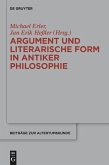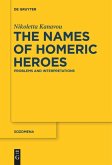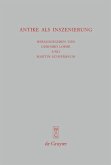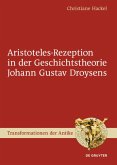How is the history of antiquity told, and what is the role of narrativity in transforming the image of antiquity? This volume addresses the highly charged intersection between experience, narrative, and history that may be apprehended when we consider the great diversity of narrative practices in literature, the visual arts, and historiography. In this study, narrativity is conceptualized as a particular way of inventing meaning by creating coherency through retrospective reorganization. Particularly in relation to antiquity, narratives may be used to establish historical continuity by filling in caesuras and by creating transitions and connections. Individual chapters explore transformations in the imagery, content, stories, and narrative modes of antiquity as they were appropriated in medieval and early modern chronicles, images, and epics. They investigate the forms, modes, and functions of such appropriation and examine the conditions that help explain the particular narrative transformations occurring in the different genres and media that are examined.
Wie wird Antikes erzählt und welche Rolle spielt Narrativität für die Transformationen von Antike? Das Thema des Bandes eröffnet ein Spannungsfeld von Ereignis, Erzählung und Geschichte, das sich in den unterschiedlichsten Gebrauchsformen von Narrativität in der Literatur, den bildenden Künsten und der Geschichtsschreibung fassen lässt. Narrativität wird hier jeweils als eine Form von Sinnstiftung durch die Herstellung von Kohärenz, als ein retrospektives Ordnen aufgefasst. Gerade in der Bezugnahme auf die Antike können Narrative zudem gerade dadurch historische Kontinuitäten schaffen, dass sie Zäsuren narrativ bewältigen, Übergänge und Zusammenhänge schaffen.
Die Beiträge untersuchen die Transformationen antiker Motive, Stoffe, Erzählungen und Erzählmodi in ihren mittelalterlichen und frühneuzeitlichen Aneignungen, in Chronik, Bild und Epos. Dabei wird nach den Formen, Modi und Funktionen dieser Aneignungen und nach den Bedingungen dafür gefragt, dass die untersuchten Gattungen und Medien jeweils spezifische narrative Transformationen hervorbringen.
Wie wird Antikes erzählt und welche Rolle spielt Narrativität für die Transformationen von Antike? Das Thema des Bandes eröffnet ein Spannungsfeld von Ereignis, Erzählung und Geschichte, das sich in den unterschiedlichsten Gebrauchsformen von Narrativität in der Literatur, den bildenden Künsten und der Geschichtsschreibung fassen lässt. Narrativität wird hier jeweils als eine Form von Sinnstiftung durch die Herstellung von Kohärenz, als ein retrospektives Ordnen aufgefasst. Gerade in der Bezugnahme auf die Antike können Narrative zudem gerade dadurch historische Kontinuitäten schaffen, dass sie Zäsuren narrativ bewältigen, Übergänge und Zusammenhänge schaffen.
Die Beiträge untersuchen die Transformationen antiker Motive, Stoffe, Erzählungen und Erzählmodi in ihren mittelalterlichen und frühneuzeitlichen Aneignungen, in Chronik, Bild und Epos. Dabei wird nach den Formen, Modi und Funktionen dieser Aneignungen und nach den Bedingungen dafür gefragt, dass die untersuchten Gattungen und Medien jeweils spezifische narrative Transformationen hervorbringen.








